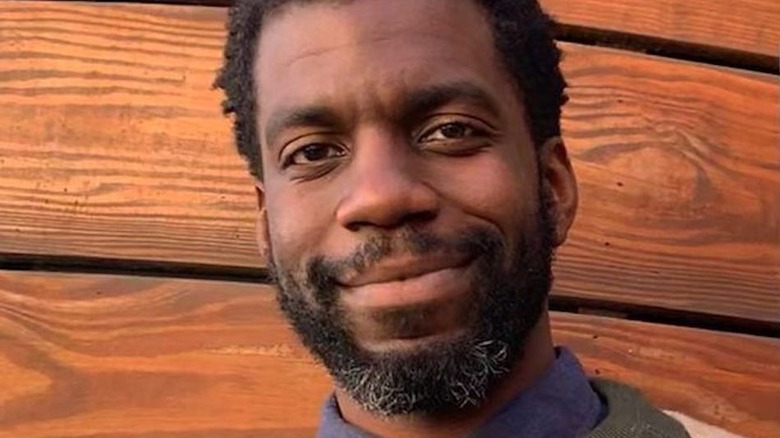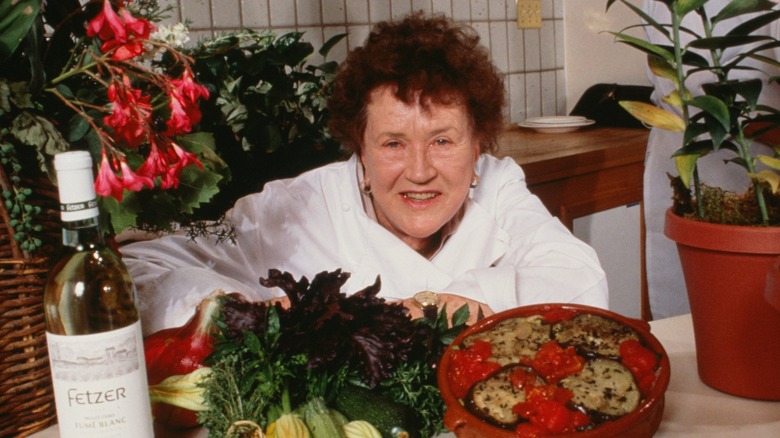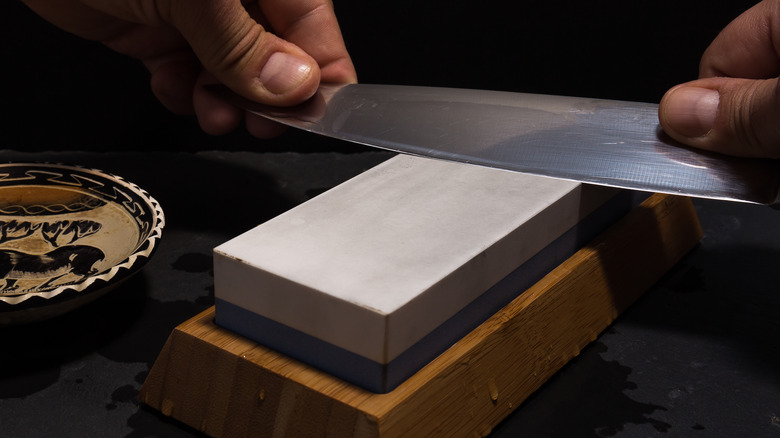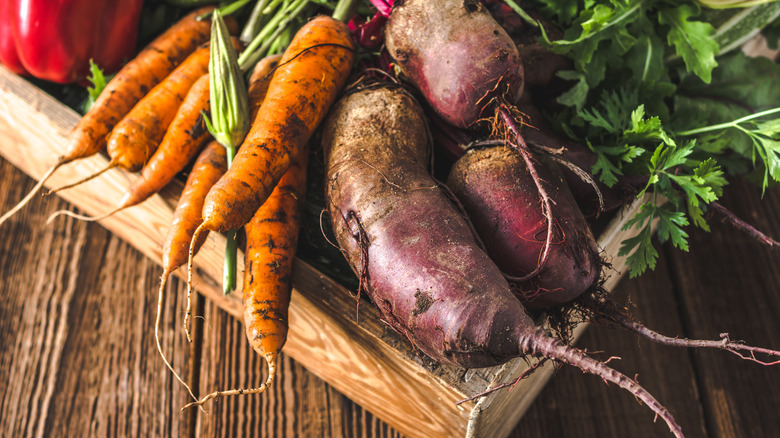What You Need To Know About High On The Hog Host Stephen Satterfield
With the Netflix series "High on the Hog," audiences across the world can explore the cultural significance that Black cuisine has on the American culinary landscape, while taking an intimate glimpse into communities that have held onto their African roots (via New York Times). Host Stephen Satterfield leads viewers across Benin and the Americas in this new show, providing cultural and historical context to the experiences he has visiting a variety of chefs, cowboys, food historians, and more.
Satterfield is an incredible choice to shed light on the impact that the African diaspora has had on American food culture. This chef-turned-journalist has years of experience in the kitchen and as a sommelier, but turned his attention to the stories surrounding food to illuminate the history and people behind each meal (via Great Jones). This accomplished figure has seen many sides of the culinary world, and thanks to his experience in the kitchen and in journalism, has the tools to walk viewers through how Black cuisine shaped America.
A long love of food and wine
Satterfield discovered his love of cooking from an early age. According to Great Jones, the journalist took an interest in food while in high school after discovering the cooking shows of Julia Child and Jacques Pépin on PBS. He would save up money to splurge on fine dining, and after one year at the University of Oregon, Satterfield decided to change course and go to culinary school. At 19 he began studying wine, and started working in the wine industry by the time he turned 21.
While working as a manager for a restaurant in San Francisco, Satterfield started the non-profit International Society of Africans in Wine. He told Great Jones the group focused on wine as a way to bring about social and economic equity in South Africa, a country with a wine industry fraught with exploitation. From here, Satterfield began to realize the power of using food, alongside his work in media, as a catalyst for social good. He shifted his focus away from his restaurant career.
Building Whetstone Magazine
Once Satterfield saw the power that both media and food could have for social change, his priorities started to shift. According to Great Jones, Satterfield had started a blog shortly after his non-profit group, which evolved into Whetstone Magazine. The publication proudly presents itself as one of the only Black-published food magazines and celebrates sharing the human experience behind food. The magazine started publication in 2016 and has given voice to over 80 creatives from across the world (via Whetstone). The diversity of editors and staff has influenced what voices take center stage, illuminating figures that mainstream media might ignore.
For Satterfield, the name Whetstone came naturally. In an interview with Currant, the journalist explained the whetstone represents a symbolic tool to him, one which commonly makes appearances in professional kitchens, but few novices use. The perhaps unknown act of a chef sharpening their knife as the first step towards making a meal resonated as a strong image, making it an ideal simulacrum for the magazine. Stephen Satterfield has blazed trails in the food world, taking on homogeneity in food journalism and challenging the leadership of established culinary institutions (via Mother Jones). According to Currant, Satterfield describes himself as an "origin forager" who constantly seeks out the anthropological angles in recipes and food culture. He seeks to shake audiences out of apathy in order to get everyone acquainted with the social constructs behind the food industry that many take for granted.
A focus on healthy, ethical eating
With years spent in restaurants and on the frontline of the food industry, Satterfield has developed a healthy take on how to approach ingredients. According to Healthline, Satterfield's mission to encourage the consumption of more produce, less meat, and less refined sugar all come back to how he experienced food sourcing while working in restaurant kitchens. While the journalist has not completely cut sugar out of his diet, he strongly advocates for balance, and never consumes soda, fruit juice, or candy.
In addition to limiting sugar, Satterfield encourages anyone looking to eat healthily and ethically to properly source their ingredients. Satterfield encourages his audience to buy from local producers and farmers whenever possible, to ensure that the food stays fresh, has little (if any) processing done to it, and supports the local industry. This ethos stems from the journalist's upbringing in Atlanta, Georgia, where he was raised with Southern staples that embodied community and wholesomeness. Satterfield has passed on his love for quality ingredients by volunteering in the community garden at the Ida B. Wells High School, an alternative school for at-risk youth located in his area. The journalist helped lead the charge to revitalize the attached garden and get students interested in the importance of growing and supporting the community.



